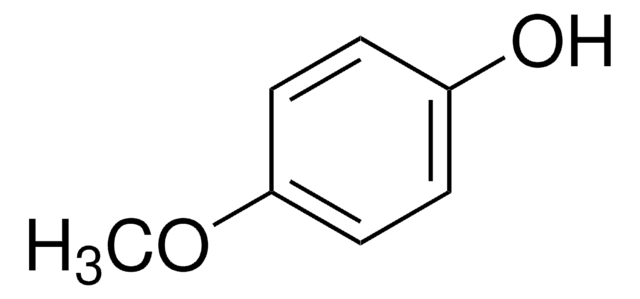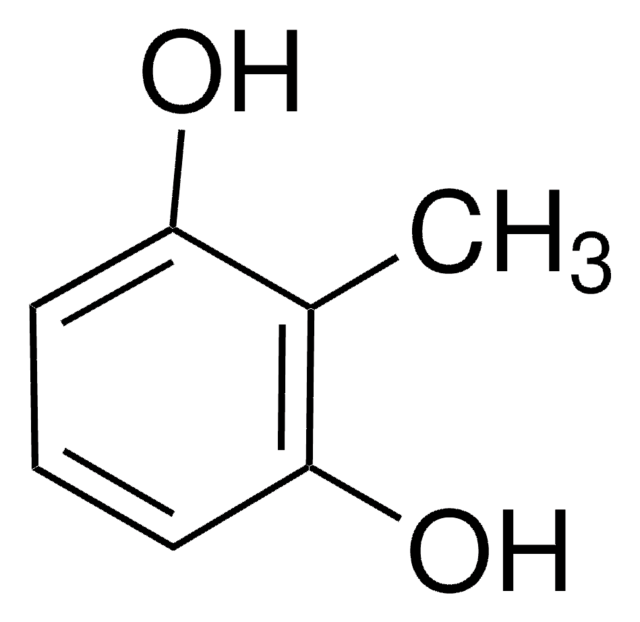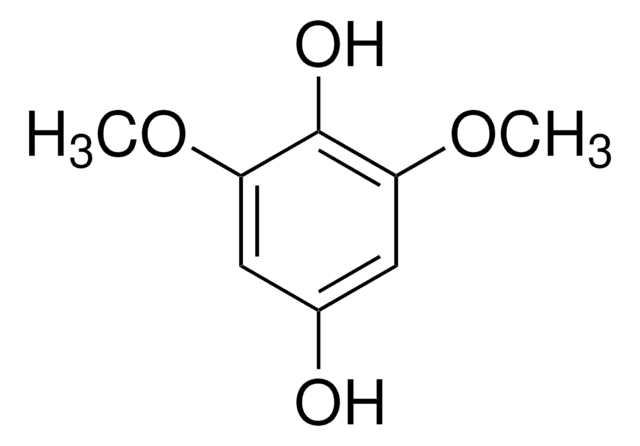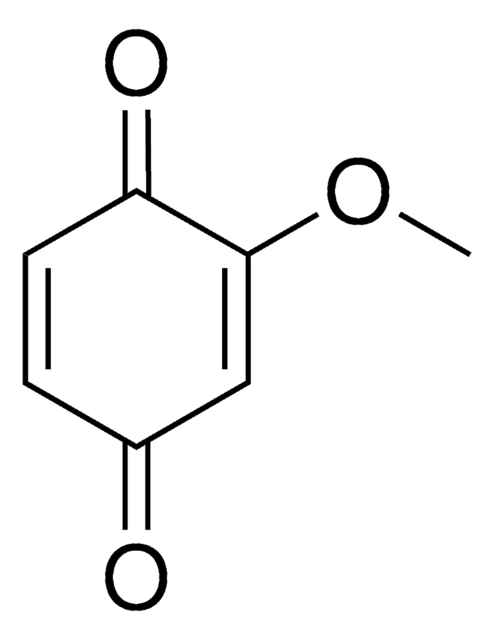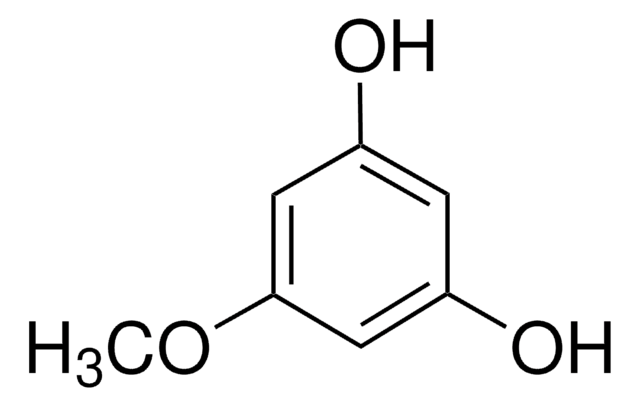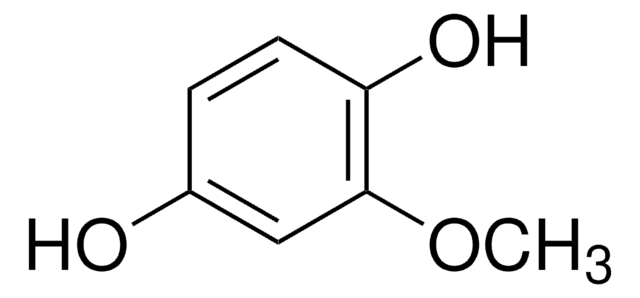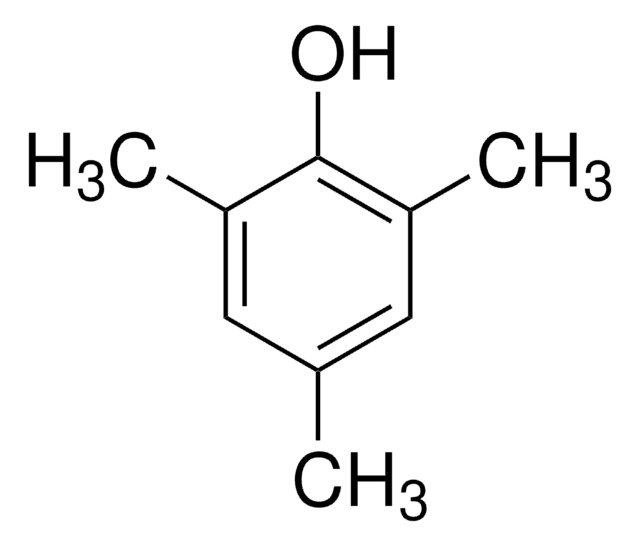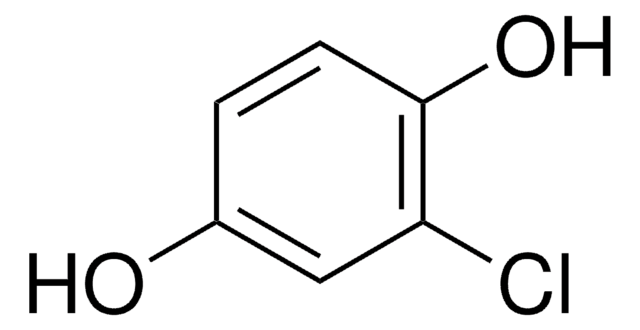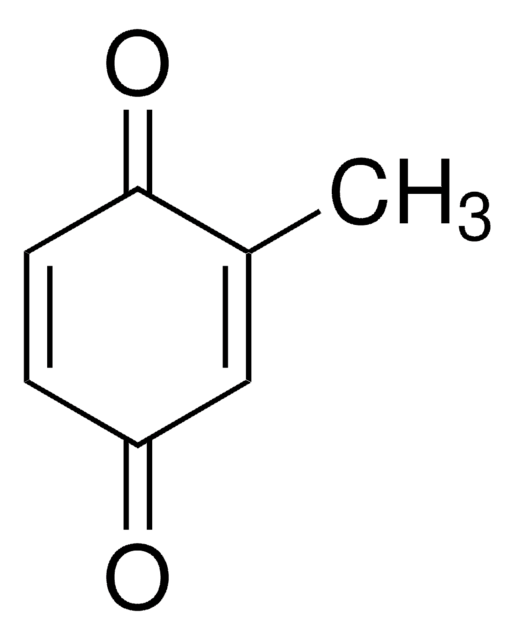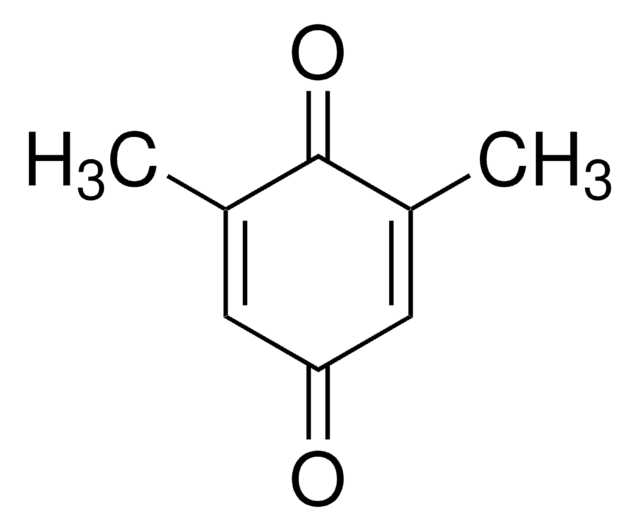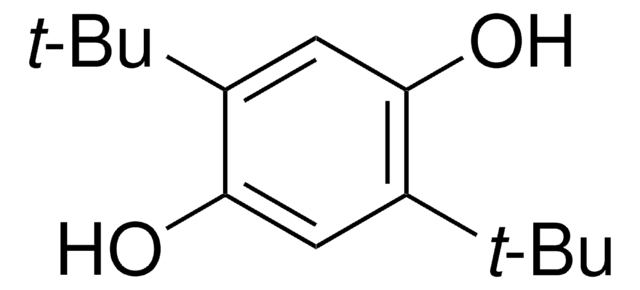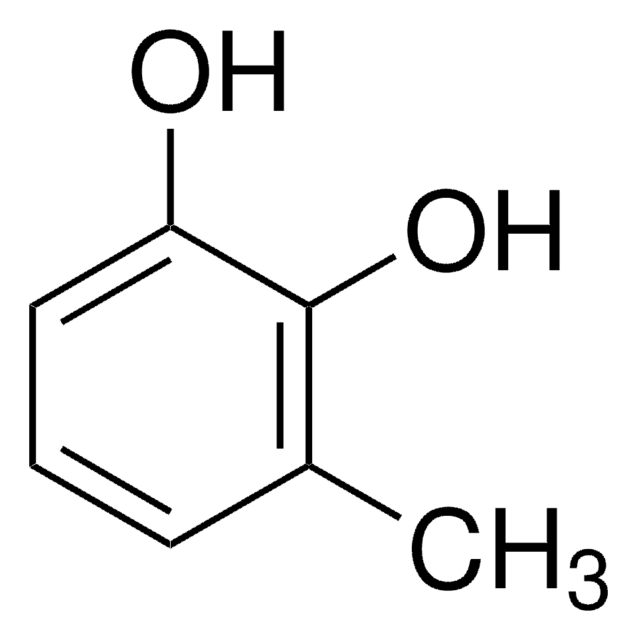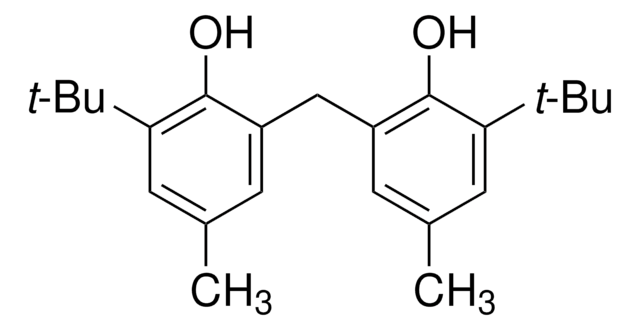176893
2-Methoxyhydroquinone
98%
Sinonimo/i:
2,5-Dihydroxyanisol
Autenticatiper visualizzare i prezzi riservati alla tua organizzazione & contrattuali
About This Item
Formula condensata:
(CH3O)C6H3(OH)2
Numero CAS:
Peso molecolare:
140.14
Beilstein:
2045285
Numero CE:
Numero MDL:
Codice UNSPSC:
12162002
ID PubChem:
NACRES:
NA.23
Prodotti consigliati
Livello qualitativo
Saggio
98%
Stato
solid
Punto di fusione
88-91 °C (lit.)
Stringa SMILE
COc1cc(O)ccc1O
InChI
1S/C7H8O3/c1-10-7-4-5(8)2-3-6(7)9/h2-4,8-9H,1H3
LAQYHRQFABOIFD-UHFFFAOYSA-N
Cerchi prodotti simili? Visita Guida al confronto tra prodotti
Codice della classe di stoccaggio
11 - Combustible Solids
Classe di pericolosità dell'acqua (WGK)
WGK 3
Punto d’infiammabilità (°F)
Not applicable
Punto d’infiammabilità (°C)
Not applicable
Dispositivi di protezione individuale
Eyeshields, Gloves, type N95 (US)
Scegli una delle versioni più recenti:
Possiedi già questo prodotto?
I documenti relativi ai prodotti acquistati recentemente sono disponibili nell’Archivio dei documenti.
I clienti hanno visto anche
David Sillam-Dussès et al.
PloS one, 7(10), e46431-e46431 (2012-10-17)
Labial glands are present in all castes and developmental stages of all termite species. In workers, their secretion contains a food-marking pheromone and digestive enzymes, while soldier secretion plays a defensive role. However, these functions were studied only in a
Maher A Qaddoura et al.
International journal of molecular sciences, 10(11), 4772-4788 (2010-01-21)
Several divinylic mesogenic monomers were synthesized based on coupling the monomer 4-(4-pentenyloxy)benzoic acid with chlorohydroquinone, 2,5-dihydroxy- acetophenone, methylhydroquinone or 2-methoxyhydroquinone. This resulted in novel mesogens of phenylene esters with different lateral substituent groups. The effect of the lateral substituent group
Koorosh Ashrafi et al.
International journal of pharmaceutics, 524(1-2), 226-237 (2017-04-05)
Drug release from chemoembolization microspheres stimulated by the presence of a chemically reducing environment may provide benefits for targeting drug resistant and metastatic hypoxic tumours. A water-soluble disulfide-based bifunctional cross-linker bis(acryloyl)-(l)-cystine (BALC) was synthesised, characterised and incorporated into a modified
Denilson F Oliveira et al.
Experimental parasitology, 199, 17-23 (2019-02-23)
Exposing second-stage juveniles (J2) of Meloidogyne incognita in vitro to a phenolic compound sometimes fails to cause J2 mortality, but in tests in vivo the same compound may reduce the infectivity and population of the nematode. This work aimed to
Il team dei nostri ricercatori vanta grande esperienza in tutte le aree della ricerca quali Life Science, scienza dei materiali, sintesi chimica, cromatografia, discipline analitiche, ecc..
Contatta l'Assistenza Tecnica.